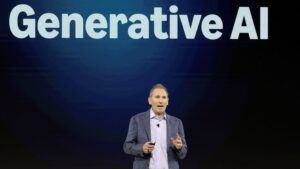Protect Your Innovative Faculty from the Pressures of the AI Race

Apple TV’s "Severance": A Deep Dive Into Its Cultural Impact
Overview of "Severance"
Apple TV’s acclaimed series, "Severance," recently concluded its second season, further solidifying its reputation as a significant cultural milestone. The show centers around Lumen, a company where employees willingly undergo a unique surgical procedure that separates their work memories from their personal lives. This split creates two contrasting identities: the “innies,” who function solely within the professional realm, and the “outies,” who exist in their personal lives without knowledge of their work experiences.
The Lead Character and Themes
The story primarily follows Mark, a former history professor who joins Lumen in an effort to cope with the loss of his wife. Although "Severance" is an original work, its thematic elements resonate with classic series like Rod Serling’s "The Twilight Zone." Viewers are immersed in a world rich in storytelling, with layers of meaning present in the dialogue, performance, cinematography, and overall production quality.
Engaging with the Audience
Fans of the series have created extensive content on platforms like YouTube, analyzing episodes, fan theories, and hidden details within the show. Moreover, the official LinkedIn page for "Severance" cleverly uses the platform for promotional purposes, sharing hints about upcoming episodes and incorporating humor to engage viewers. The tagline, “Giving employees the best work environment they’ll never know, with our patented and extremely safe Severance procedure,” reflects the show’s unique blend of seriousness and dark humor.
The Personal Struggles
"Severance" explores the challenges of maintaining one’s humanity in a highly controlled environment dominated by technology. An article in Time magazine highlighted the experiences of various educators, offering insight into the struggles faced by faculty in the realm of higher education, exacerbated by the introduction of artificial intelligence (AI) and its implications.
Mark Watkins, who directs the Mississippi AI Institute, raised important questions regarding the costs of AI in education, emphasizing the emotional toll on educators facing burnout or even leaving the profession entirely.
Current Challenges in Higher Education
Educational institutions are grappling with numerous challenges, including shifts in federal funding, changing demographics affecting enrollment, and the effects of the COVID-19 pandemic on student learning. These issues are compounded by low faculty salaries in various regions and a loss of experienced leadership, straining faculty morale and support.
Instructors, particularly those teaching online, often report an overwhelming sense of burnout. This exhaustion stems not only from the demands of teaching but also from the expectation of constant availability to students, which further complicates work-life balance.
The Connection Between AI and Education
The advent of AI technologies presents both opportunities and challenges for educators. Administrators often expect faculty to adapt to AI in the classroom quickly, viewing it as a solution to modern educational needs. However, there is a significant gap in guidelines and support for the effective integration of these tools. As educators strive to provide high-quality instruction that meets industry expectations, the pace of innovation sometimes outstrips institutional support.
Collaboration among faculty is essential, as many educators are innovating independently to incorporate AI into their curricula. Still, institutions struggle to create policies that ensure the safe and affordable use of these technologies, leading to frustration and confusion among staff.
The Role of Human Connection
Throughout both seasons of "Severance," the characters navigate their struggles with the support of one another, demonstrating that relationships can endure even under oppressive circumstances. Visual storytelling in the series highlights this bond through the transition between digital and film cinematography.
The series finale evokes feelings of nostalgia and connection, reminiscent of classics such as "The Breakfast Club" and "Thelma and Louise." It is a poignant reminder that human relationships can transcend technological boundaries.
Navigating the Future
As educational institutions continue to face pressure from AI and other technological advancements, the need for collaborative efforts and innovative leadership becomes increasingly apparent. The landscape of higher education is evolving, and strengthening connections among educators can help navigate the complexities brought on by these changes.
In this new era, fostering an environment of trust, collaboration, and effective communication will be essential for overcoming the challenges presented by technology and ensuring that the core values of education remain intact.






